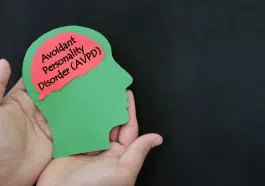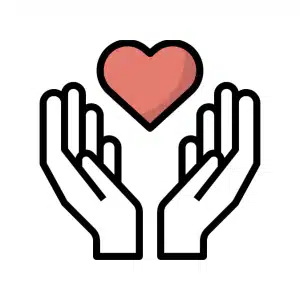Collaborative therapy is a form of therapy whereby both the patient and the psychologist work hand in hand to decide the treatment procedure. Collaborative therapy is based on various practice principles such as accountability, collaboration, respect, and integrity. This form of therapy focuses on helping individuals overcome their challenges by setting goals together and identifying ways to realize those goals.
Why was Collaborative Therapy Developed?
A renowned psychotherapist, Harlene Anderson, developed collaborative therapy upon realizing that therapy can sometimes be hindered by a lack of collaboration between the client and therapists, especially those clients who have a hard time trusting therapists.
What can Collaborative Therapy Help With?
Collaborative therapy is ideal for persons with anxiety, marital issues, and depression. It’s also effective in families, children, and couples since it helps them understand the causes and triggers for their problems and helps these individuals to develop effective coping mechanisms. Given that collaborative therapy is more like a philosophy, it allows therapists to help their clients come up with solutions and gives them a chance for an upper hand.
How Effective is Collaborative Therapy?
It’s believed that collaborative therapy can increase an individual’s coping skills, self-efficiency, and decision-making capabilities. It can also raise a client’s awareness of what triggers their issues.
Individuals under collaborative therapy are more likely to develop a stronger sense of self better emotional regulation and develop better ways of handling their issues. They also build self-love and a greater understanding of empathy.
Types of Collaborative Therapy
Collaborative therapy is more of a philosophy than a therapy. That said, there are no specific forms that can be identified. Instead, collaborative therapy is associated with humanistic approaches to psychotherapy, such as person-centered therapy and existential psychotherapy. Developing a collaborative relationship with your therapists is vital in any effective psychotherapy.
Nevertheless, there are two formats of collaborative therapists—therapist-led and client-led.
Therapist-led collaborative therapy is when the therapist is more involved in driving the sessions to experiment with their clients’ beliefs, restructuring thoughts, or testing their cognitive-behavioral therapy.
On the other hand, in client-led collaborative therapy, the clients take charge of the session by deciding which topics and issues they will discuss. At the same time, the therapist helps them prioritize concerns and goals.
Benefits of Collaborative Therapy
This type of therapy comes with a fair share of advantages. They include:
Increased Client Insight
Since the client and the therapist collaborate in solving the issues, they are more likely to have a clear understanding of the problems involved. As a result, they will work together to develop small changes that lead to more significant successes.
Clients’ Experiences are Respected
While therapists should be experts in their line of work, the client is more informed about their own lives and challenges. Therefore, in collaborative therapy, the client can give valuable information during the sessions without the therapist assuming they are aware of their client’s experience.
Increased Client Empowerment
Collaborative therapy empowers the clients with skills that they can continue to use to solve their problems even after the sessions.
Increased Client Engagement
In collaborative therapy, the client becomes a partner in the session instead of being told what to do—without knowing why and how. With the engagement between the client and the therapist, the clients feel motivated and develop trust towards the process.
Techniques of Collaborative Therapy
Though they are used in various psychotherapy approaches, some ideas guide the collaborative therapists in developing a therapeutic relationship. However, they aren’t techniques or rules, and each therapist can build their ways to collaborate with each client. These approaches include:
- Relational expertise: When therapists listen and understand their client’s experiences, they become more effective. The clients understand their experiences better, and the therapist must be an expert in listening to them.
- Mutual inquiring conversational partnership: The client and therapist work hand in hand with honesty, respect, genuineness, and empathy to share information to help the clients understand their problems.
- Not knowing: The patient is the only person who understands what it feels like to be in their situation. Not-knowing involves not judging or assuming you know their problems and allowing them to drive the session.
- Mutual transforming: Therapy is a process for the client and therapist to work together to transform themselves and their relationship.
- Living with uncertainty: Therapists might not have all answers for their clients; hence they must be comfortable living with uncertainty. They focus on what’s happening at the moment instead of feeling the need to drive the process.
- Being public: The therapist can share their opinion so that the client doesn’t wonder what the therapist thinks about them. Therefore, the therapist can give their professional opinion regarding diagnoses, personal thoughts, or theoretical ones.
- Orienting towards everyday life: Therapy is a way of helping one develop ways to handle their daily life. Therefore, therapists can help you develop coping mechanisms even after sessions to help you move on with your regular life instead of relying on therapy from time to time.
How To Find A Collaborative Therapist
To find a collaborative therapist, you need to research online or review the providers on your insurance. After selecting some collaborative therapists, ensure to give them a call to understand how they work. Also, if you’re in a group that openly discusses mental health issues, you might ask for a referral or get a referral from your physician. However, understand that one therapist might not be the right one for everybody. Therefore, you should do your homework until you get the one right for you.
Conclusion
Collaborative therapy is a form of therapy whereby both the client and therapist collaborate to develop coping mechanisms for the client. This form of therapy is ideal for individuals who would like to find the solution to their problems. Therefore, if you’re struggling with depression or anxiety and would like to collaborate with a therapist to know how you can handle your situation, collaborative therapy might be the ideal therapy for you.















